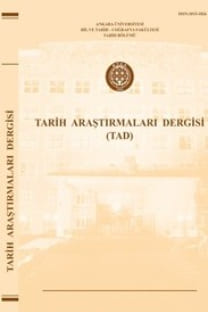İstanbul Arkeoloji Müzeleri kolleksiyonu’ndan üç yeni Hitit mührü
Söz konusu makalede, İstanbul Arkeoloji Müzeleri koleksiyonunda korunan üç Hitit dönemi mührü incelenmiştir. Mühürlerin ilkinde, Hiyeroglif Luvicesi ile yazılmış BONUS2 VIR2 Malazi/Malaza “İyi erkek Malazi/Malaza” ismi okunmaktadır. İkinci mührü ise, BONUS2 VIR2 Palla “İyi erkek Palla” şeklinde okuyoruz. Söz konusu mühürler, M.Ö. 13.yüzyıl ya da daha erken 12.yüzyıla Geç Hitit imparatorluk ya da imparatorluk sonrasına tarihlendirilmeli ve bikonveks mühür grubunda değerlendirilmelidir. Çerçeve bandında yarımşar daireler halinde, üstte örgü ve altta spiral motifleri olan üçüncü mühür ise; dış görünüşüne göre, Eski Hitit dönemi mühürleri arasında değerlendirilmelidir
Anahtar Kelimeler:
Hitit mühürleri, Hiyeroglif Luvicesi, İstanbul Arkeoloji Müzeleri.
THREE NEW HITTITE SEALS IN THE COLLECTION OF ISTANBUL ARCHAEOLOGICAL MUSEUM
This article attempts to read and then date the inscriptions on three seals from the collection at the İstanbul Archeology Museum. The name of the owner of the first seal is written in Cuneiform Luwian and should be read as: BONUS2 VIR2 Malazi “Good Man Malazi/Malaza”. The name of the owner of the second seal, also written in Cuneiform Luwian, should be read is: BONUS2 VIR2 Palla “Good Man Palla”. Both of these seals can be dated to the 13th century BC, or at latest the early 12th century BC (i.e. the Late Hittite Kingdom period or shortly after) and they belong to the biconvex seal group. The third seal features stylistic elements of the Old HIttite Kingdom period. It contains a frame strip which includes a pattern of semi circles, spiral motifs in the lower part of the legend, and also a knitted pattern just above it.
Keywords:
Hittite Seals Hierogylyphic Luwian, , Istanbul Archeology Museums.,
___
- Boehmer, R.M. - Güterbock H.G. 1987: Glyptik aus dem Stadtgebiet von Boğazköy. Grabungskampagnen 1931-1939, 1952-1978, (Boğazköy-Hattuša) Berlin 1987.
- Gorny, R.L., 1993 : “The Biconvex Seals of Alişar Höyük”, Anatolian Studies 43: 163-191.
- Mora, C., “Seals and Seal Impressions”, in: Arslantepe 9 (2013) 251-274.
- Laroche, E. 1966: Les Noms des Hittites, Paris.
- ISSN: 1015-1826
- Yayın Aralığı: Yılda 2 Sayı
- Başlangıç: 1963
- Yayıncı: Levent KAYAPINAR
Sayıdaki Diğer Makaleler
Moğol göçebeliği ve orta doğu coğrafyası: Tümenler ve Kışlaklar
Hitit Devleti’nde güvenlik algısı
Suşehri nüfus sayımı (1835-1843) örneğinde nüfus defterleri
Sirge Kazası Dikey Boyutta Bir Yerel Tarih Araştırması
PREHISTORİK DÖNEMDE KARIŞIK VARLIKLAR VE GÜCÜN TEMSİLİ
Osmanlı şehirlerinde Belçika şirketlerinin altyapı faaliyetleri
Memet YETİŞGİN, Toroshan ÖZDAMAR
Hitit ritüellerinde kullanılan bir mekan: gıšza.lam.gar “çadır”
